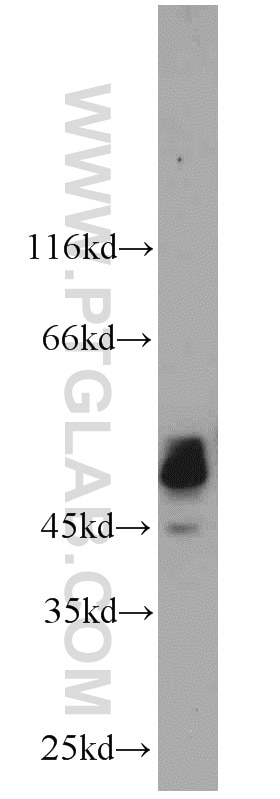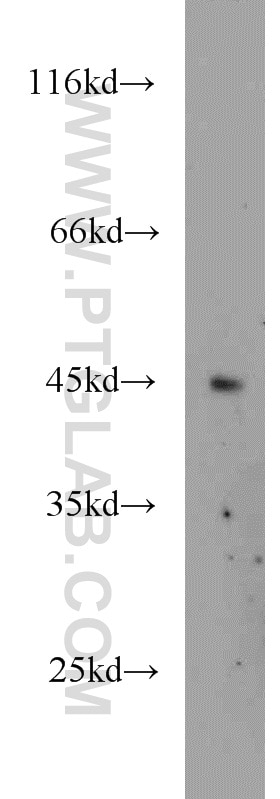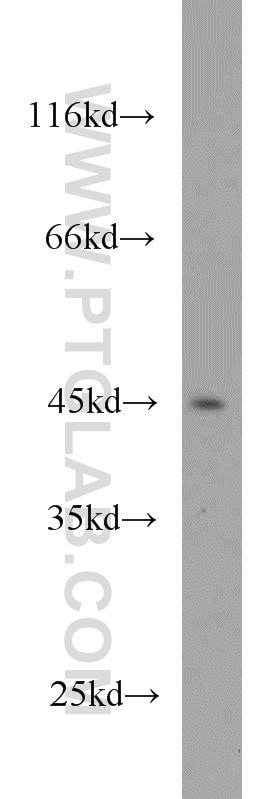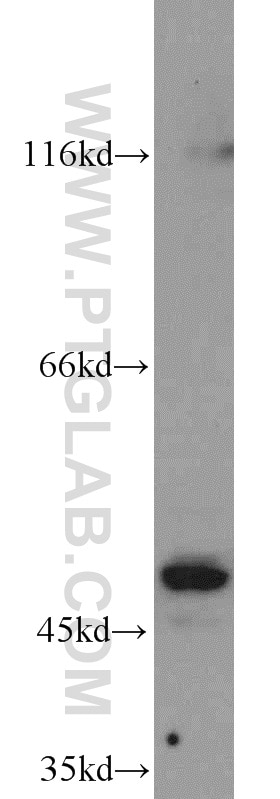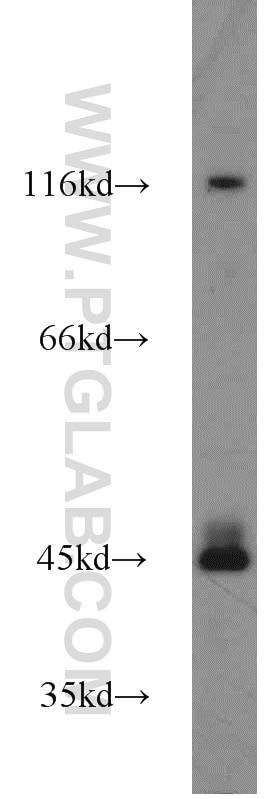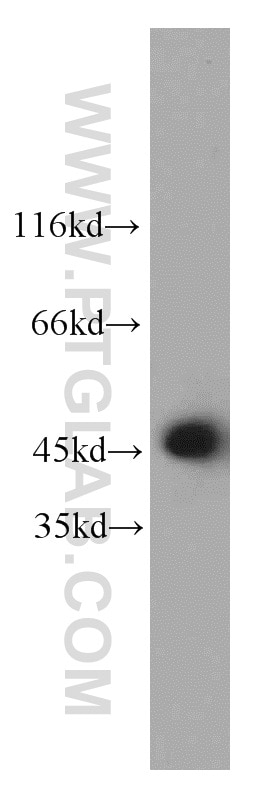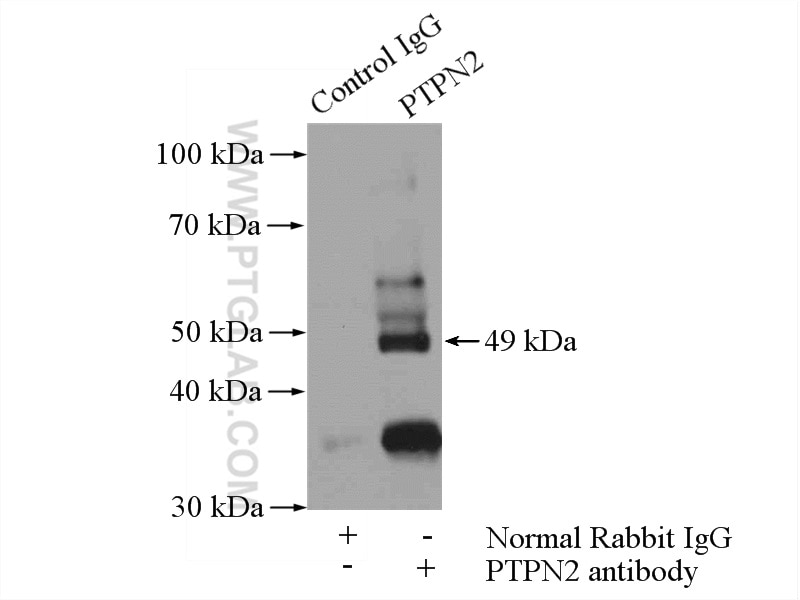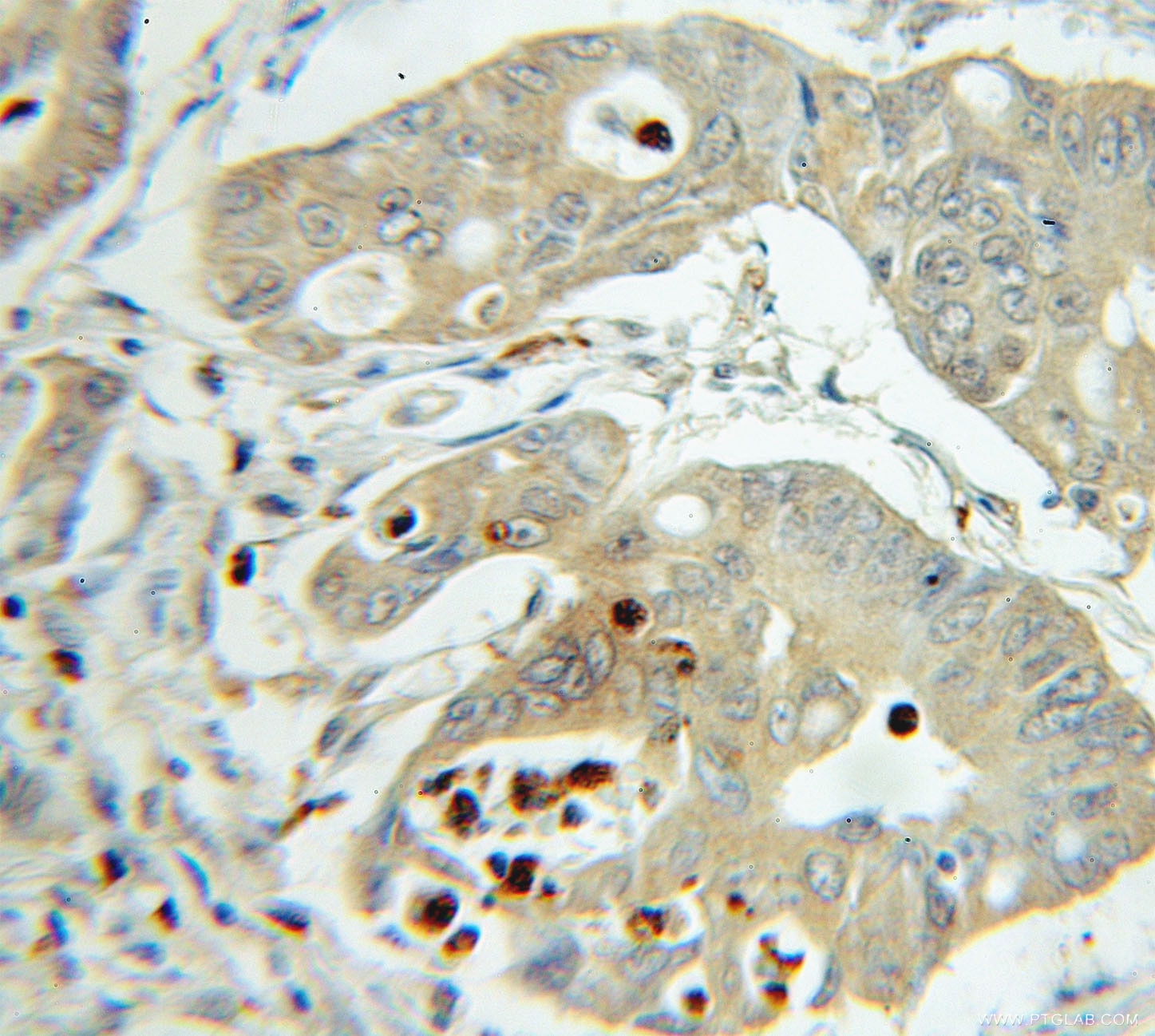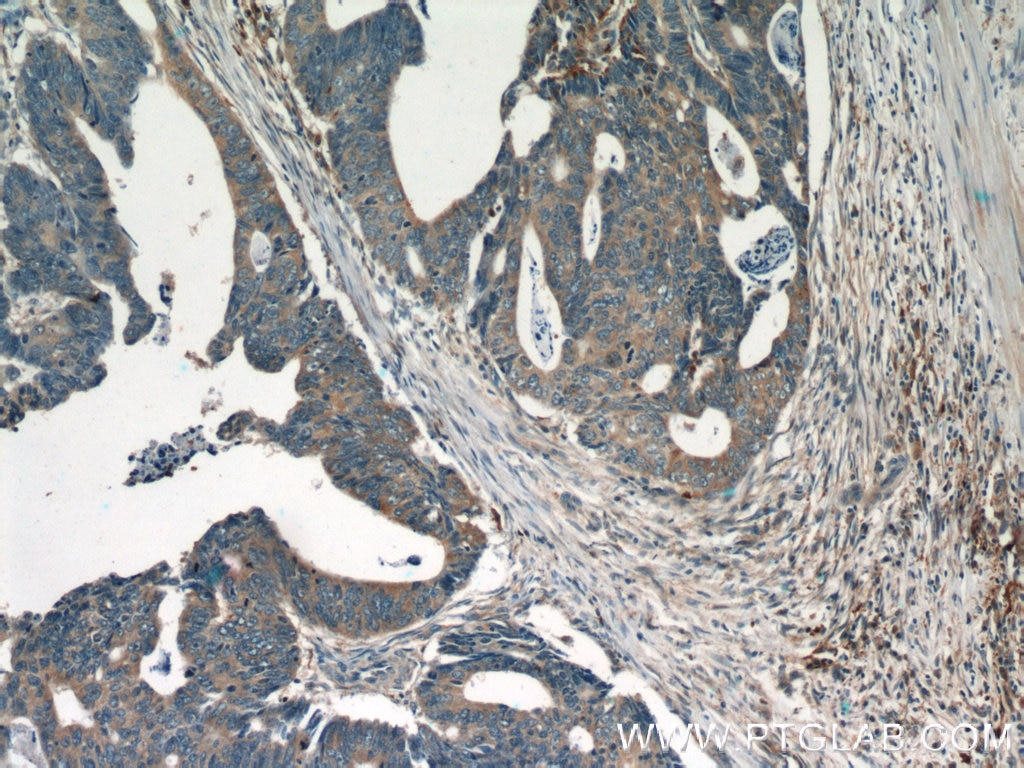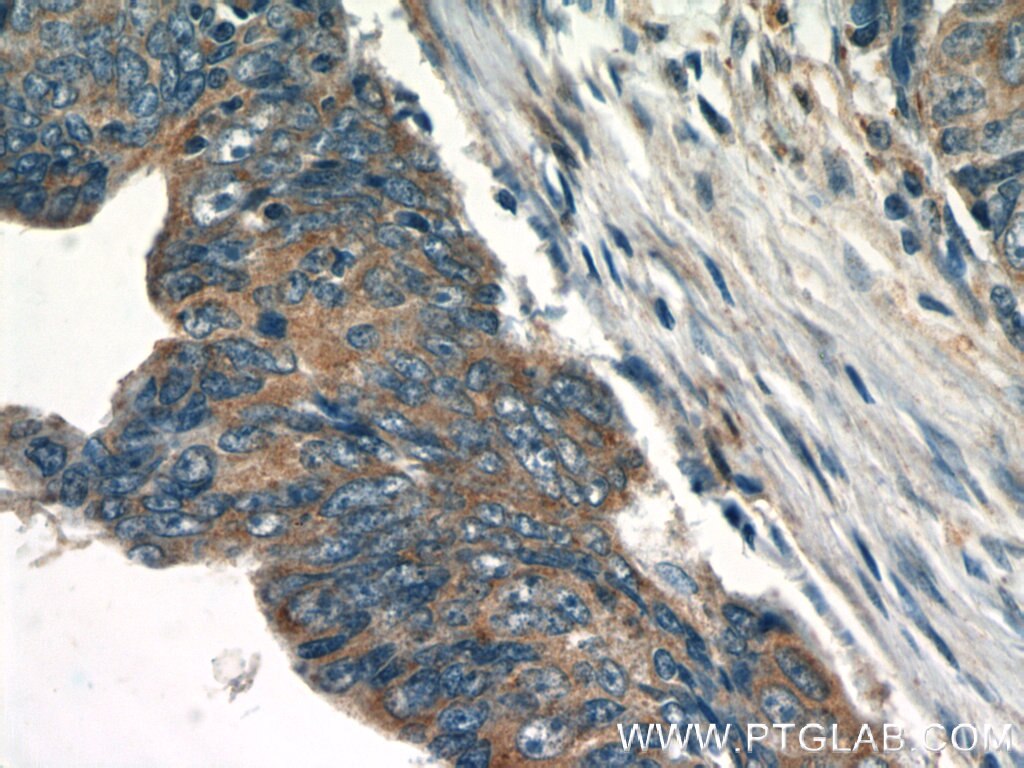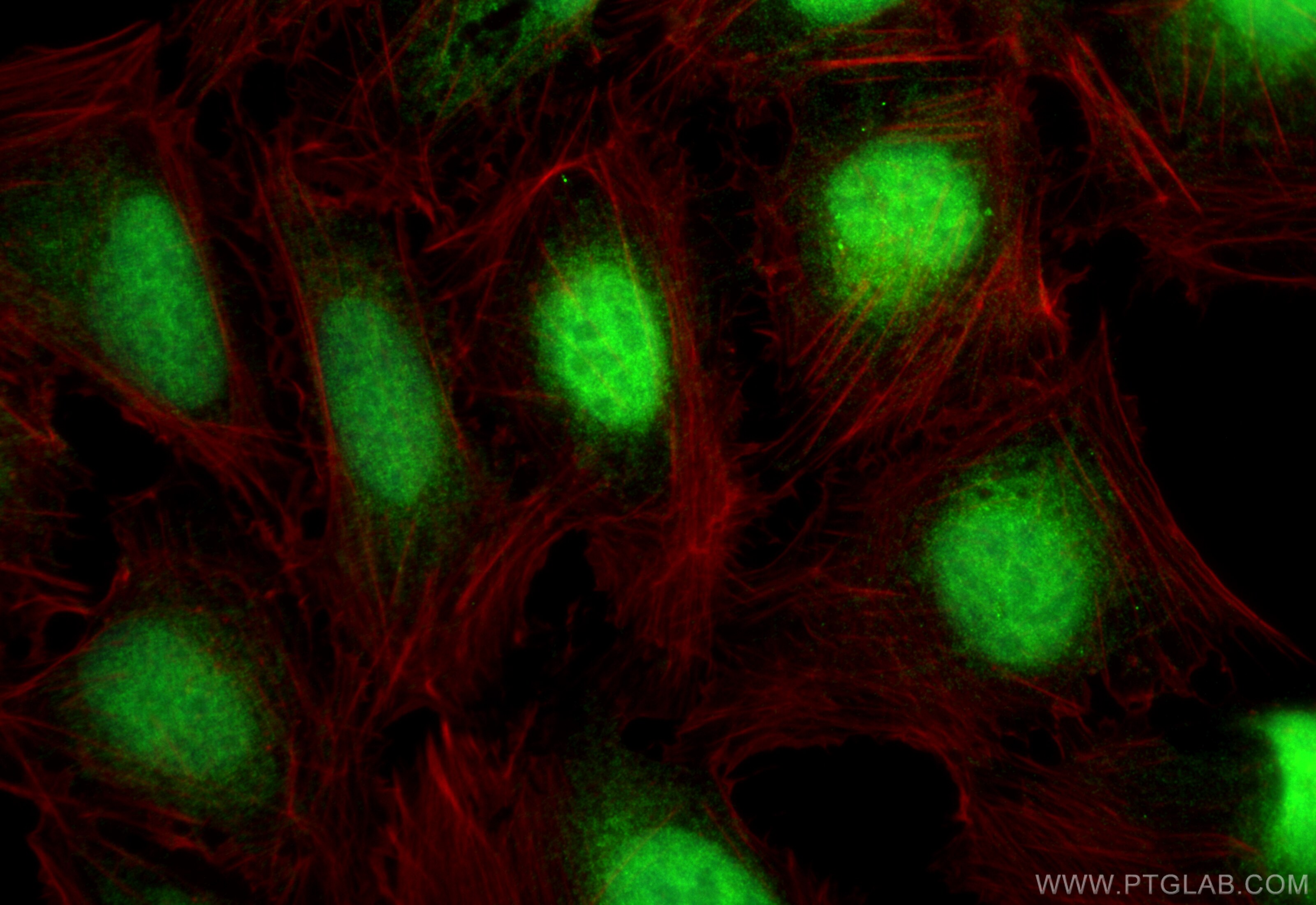- Phare
- Validé par KD/KO
Anticorps Polyclonal de lapin anti-PTPN2
PTPN2 Polyclonal Antibody for WB, IHC, IF/ICC, IP, ELISA
Hôte / Isotype
Lapin / IgG
Réactivité testée
Humain, souris
Applications
WB, IHC, IF/ICC, IP, ELISA
Conjugaison
Non conjugué
N° de cat : 11214-1-AP
Synonymes
Galerie de données de validation
Applications testées
| Résultats positifs en WB | tissu de thymus de souris, cellules HeLa, cellules HL-60, cellules NIH/3T3 |
| Résultats positifs en IP | cellules HL-60 |
| Résultats positifs en IHC | tissu de cancer du côlon humain il est suggéré de démasquer l'antigène avec un tampon de TE buffer pH 9.0; (*) À défaut, 'le démasquage de l'antigène peut être 'effectué avec un tampon citrate pH 6,0. |
| Résultats positifs en IF/ICC | cellules U2OS, |
Dilution recommandée
| Application | Dilution |
|---|---|
| Western Blot (WB) | WB : 1:500-1:2000 |
| Immunoprécipitation (IP) | IP : 0.5-4.0 ug for 1.0-3.0 mg of total protein lysate |
| Immunohistochimie (IHC) | IHC : 1:20-1:200 |
| Immunofluorescence (IF)/ICC | IF/ICC : 1:200-1:800 |
| It is recommended that this reagent should be titrated in each testing system to obtain optimal results. | |
| Sample-dependent, check data in validation data gallery | |
Applications publiées
| KD/KO | See 5 publications below |
| WB | See 9 publications below |
| IHC | See 9 publications below |
| IF | See 1 publications below |
| IP | See 2 publications below |
Informations sur le produit
11214-1-AP cible PTPN2 dans les applications de WB, IHC, IF/ICC, IP, ELISA et montre une réactivité avec des échantillons Humain, souris
| Réactivité | Humain, souris |
| Réactivité citée | Humain, souris |
| Hôte / Isotype | Lapin / IgG |
| Clonalité | Polyclonal |
| Type | Anticorps |
| Immunogène | PTPN2 Protéine recombinante Ag1709 |
| Nom complet | protein tyrosine phosphatase, non-receptor type 2 |
| Masse moléculaire calculée | 49 kDa |
| Poids moléculaire observé | 45-50 kDa |
| Numéro d’acquisition GenBank | BC016727 |
| Symbole du gène | PTPN2 |
| Identification du gène (NCBI) | 5771 |
| Conjugaison | Non conjugué |
| Forme | Liquide |
| Méthode de purification | Purification par affinité contre l'antigène |
| Tampon de stockage | PBS with 0.02% sodium azide and 50% glycerol |
| Conditions de stockage | Stocker à -20°C. Stable pendant un an après l'expédition. L'aliquotage n'est pas nécessaire pour le stockage à -20oC Les 20ul contiennent 0,1% de BSA. |
Informations générales
PTPN2(Tyrosine-protein phosphatase non-receptor type 2) is also named as PTPT and belongs to the protein-tyrosine phosphatase family. It may modulate beta-cell apoptosis and/or local release of inflammatory mediators in the course of a viral infection by acting, at least in part, at the pancreatic beta-cell level(PMID: 19825843). This protein has some isoforms produced by alternative splicing with the molecular mass of 40-50 kDa.
Protocole
| Product Specific Protocols | |
|---|---|
| WB protocol for PTPN2 antibody 11214-1-AP | Download protocol |
| IHC protocol for PTPN2 antibody 11214-1-AP | Download protocol |
| IF protocol for PTPN2 antibody 11214-1-AP | Download protocol |
| IP protocol for PTPN2 antibody 11214-1-AP | Download protocol |
| Standard Protocols | |
|---|---|
| Click here to view our Standard Protocols |
Publications
| Species | Application | Title |
|---|---|---|
Biochim Biophys Acta Mol Basis Dis PTPN2 dephosphorylates STAT3 to ameliorate anesthesia-induced cognitive decline in aged rats by altering the microglial phenotype and inhibiting inflammation | ||
Int Immunopharmacol Hypoxia disrupts the nasal epithelial barrier by inhibiting PTPN2 in chronic rhinosinusitis with nasal polyps
| ||
Int Immunopharmacol Oral squamous cell carcinoma-derived EVs promote tumor progression by regulating inflammatory cytokines and the IL-17A-induced signaling pathway | ||
Cell Death Dis Cryptotanshinone inhibits human glioma cell proliferation in vitro and in vivo through SHP-2-dependent inhibition of STAT3 activation.
| ||
Sci Rep Targeted disruption of TC-PTP in the proliferative compartment augments STAT3 and AKT signaling and skin tumor development. |
